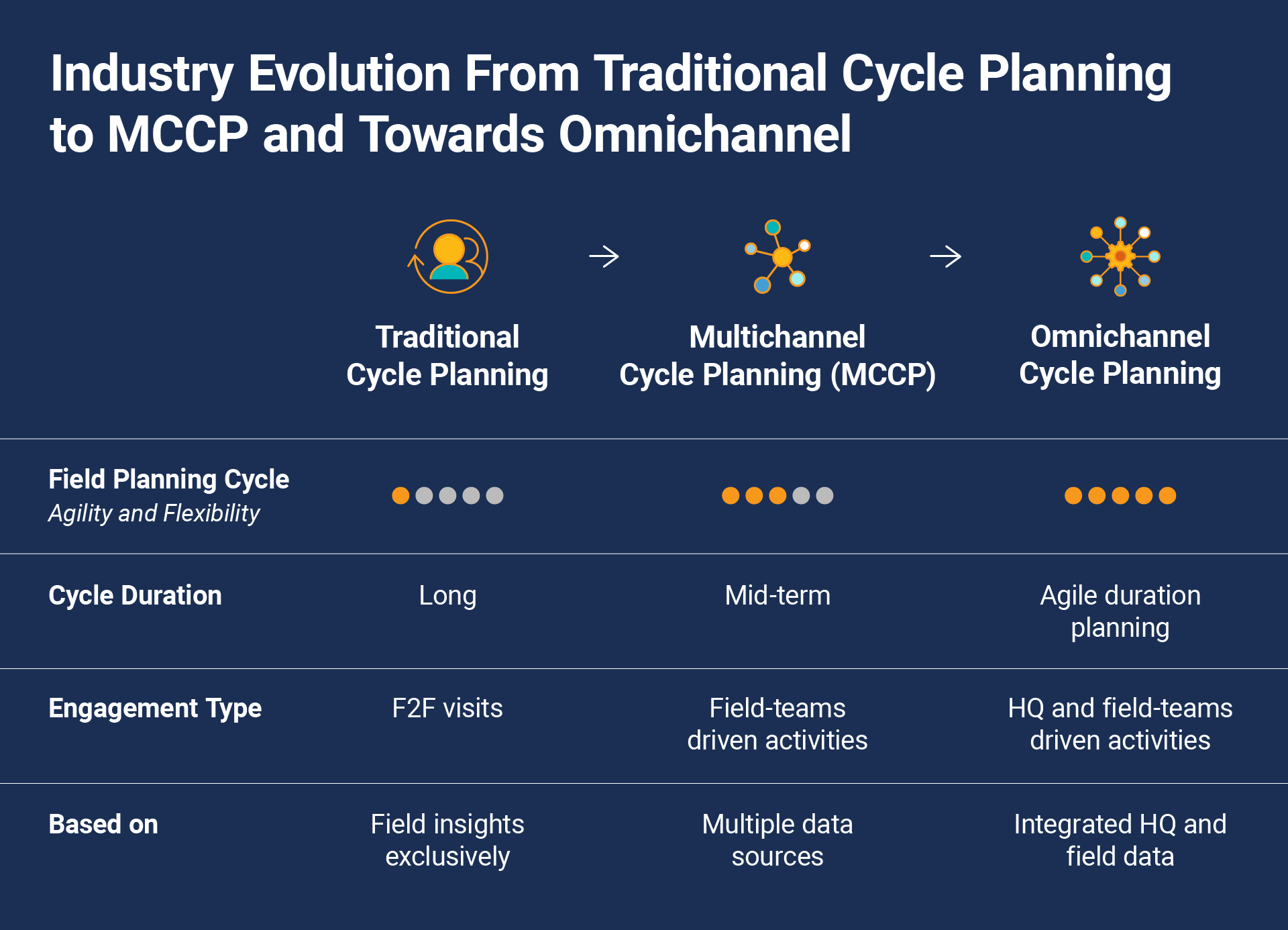Blog
Driving Customer-Centric Field Planning with Experts from LEO Pharma and Sanofi
Feb 16, 2024 | Bilyana Hristova
Feb 16, 2024 | Bilyana Hristova
Although biopharma companies face challenges with omnichannel adoption, including siloed data sources, complex field planning, and limited global visibility, these obstacles can be overcome with the right strategies. Traditional cycle planning, which is typically long and focused solely on face-to-face interactions, also makes it difficult for field teams to be effective. As the industry transitions to a more agile and customer-centric approach that integrates all engagement channels, the planning process must also evolve.
Solely relying on field engagement data is not enough. The experience and knowledge gained from the field are essential for effective planning when designing a strategy. It is the right balance of data and field insights, along with collaboration between local and global teams, that can effectively bridge the gap between strategy and execution.

Three biopharma companies share how they have overcome common pitfalls and achieved a customer-centric approach to field planning.
LEO Pharma: Bridge the global-local divide
Local teams often face challenges executing strategy set at the global level. To overcome this, LEO Pharma introduced a new collaboration model so that global and local teams can co-create the go-to-market strategy.
This direct collaboration helped local teams get better visibility and insight into the global strategy while giving them the opportunity to tailor the approach for each region. One successful localization was in Japan, where LEO Pharma aligned its global strategy to the local market’s unique needs. Different markets have different levels of maturity and channel preferences. Having the flexibility to adapt to the right channel mix according to the region and customer preferences is necessary to achieve optimal engagement.
LEO Pharma is also focused on two-way communication between HCPs and field teams. With more “pull” marketing strategies, HCPs can connect anytime they want (including outside office hours). Alongside existing “push” marketing tactics, this approach is building trust in HCP relationships with greater flexibility and personalization.
“The magic really happens when the global teams come together with the local teams and build a whole plan. Rather than acting as ‘painkillers’ that seek to solve problems immediately, we want to be ‘vitamins’ that offer long-term benefits,” says Helene Slee, head of global digital customer engagement platforms at LEO Pharma.
Sanofi: Gain actionable insights through field feedback
Sanofi is delivering a better customer experience by optimizing channel choice through insight-driven field data. The insights, derived directly from field teams, provide contextual understanding to aggregate data analyzed by global teams. This creates a two-way communication between the global and field teams to increase personalization in HCP interactions.
“To be successful in our industry, we need to ensure that our teams can provide feedback, access data, and systems, and have a good understanding of how to use them. By continuously engaging with their customers through different channels, field teams can better understand how to provide HCPs with the right information, at the right time, with the aim to improve patient outcomes,” says Miren Guri, business operational lead at Sanofi. “Nowadays we are using more digital channels, and thanks to it we are getting more data which helps us to add more personalization to our engagement with HCPs.”
Structured feedback also helps the team understand why certain approaches may not be working. For example, does remote detailing have a low success rate for a certain group of doctors because of a firewall or because it’s not the doctors’ preferred approach?
This process enabled Sanofi to move from a multichannel to an omnichannel approach. Instead of having all channels available at the same time, Sanofi’s reps can select the most relevant channel to the HCP. By empowering reps to personalize their engagement with each HCP, field teams can find the right channel mix to improve the customer experience.
Top-Tier Biopharma Company: Champion change to build scale
Omnichannel adoption can vary greatly across different markets. To address this challenge and build a more cohesive framework, a top 20 biopharmaceutical company created a global center of expertise for field planning, using Align.
This biopharma company used early adopters as ambassadors, training them to become experts and champion the changes to other reps. This supported a more organic and widespread adoption of omnichannel across the different markets than previously possible.
By establishing customer journeys and gathering feedback, they were able to customize their approach based on the preferences of HCPs, rather than pushing a one-size-fits-all strategy.
Align is playing a central role as the end-to-end field planning framework to enable this omnichannel execution, ensuring they are delivering the right message, at the right time, to the right physician. “The most important benefit of having a field planning solution like Align is that we are able to gather channel insights and use these to support field teams to take relevant next best actions,” says an industry expert from the biopharmaceutical company.
Maximize omnichannel engagement
LEO Pharma, Sanofi, and a global biopharma company in life sciences have successfully implemented customer-centric strategies, despite the challenges of navigating rapidly changing customer landscapes. With the help of data-driven field insights and standardized governance, they have aligned their local and global teams to personalize engagement to each unique market and physician.
As field teams evolve and have access to more channels for customer engagement, it becomes essential to manage territories effectively, with clarity and visibility to plan and execute field activity with precision. By leveraging the right technology, companies can drive commercial success and ultimately improve patient outcomes. Find more information on our field planning page.
Learn three steps to create better HCP engagements in this eBook.